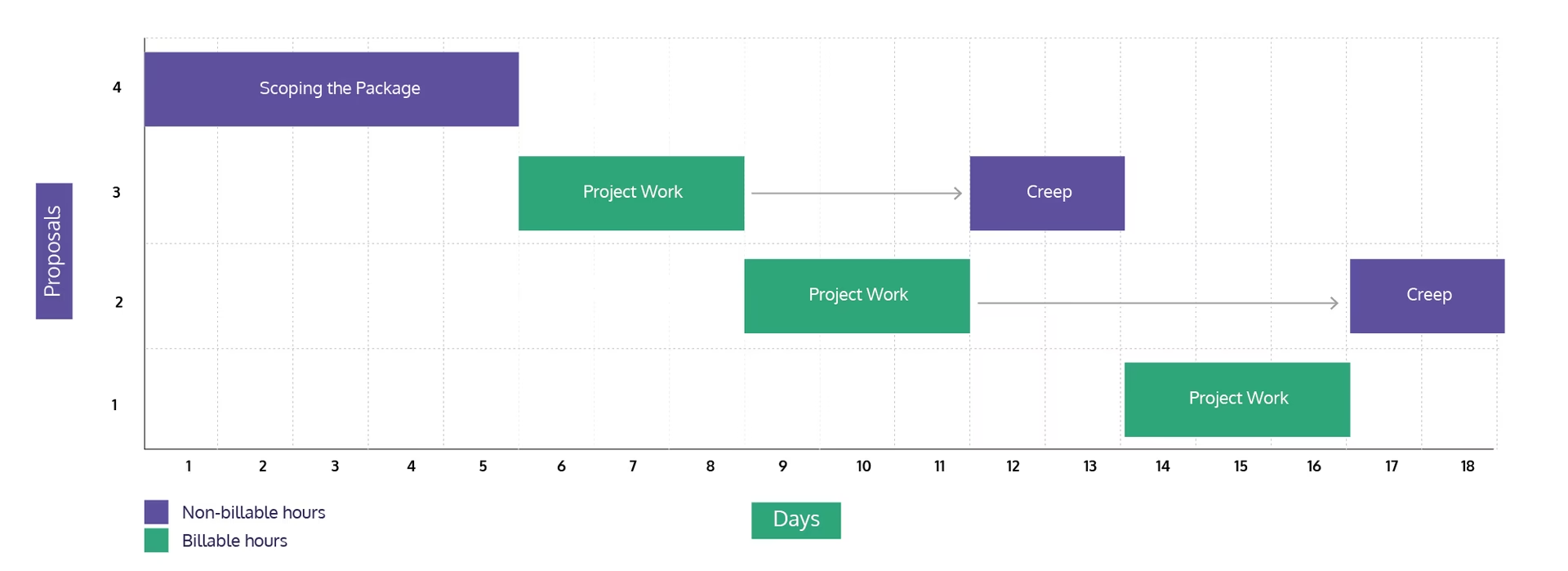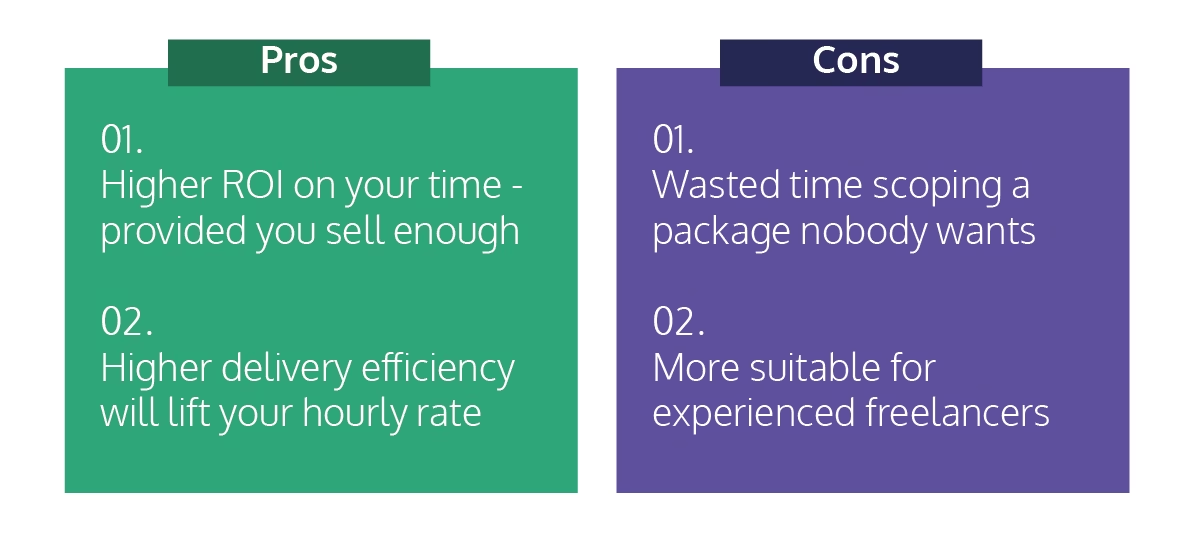Package deals are a way of reducing the time and effort of project scoping. Rather than negotiate a project’s scope with an individual client, you create a pre-defined set of deliverables ahead of time. Then, your potential clients can just choose whether they want these things or not.
It’s a bit like ordering from a menu at a restaurant. When you go to a restaurant, you don’t go to the kitchen and negotiate with the chef about what kind of food they’ll prepare for you, and how much it will cost. Rather, you just have a fixed set of options at a fixed series of prices.
Packaging your services is a similar approach. Like every pricing approach, it has some pros and some cons.
Spreading out your time
The risks and benefits of packaged deals both come from the same place: spending a lot of time up front, in order to (hopefully!) save time down the track.
A package service is basically a proposal that you put together ahead of time. The big difference is that you don’t get to sit down and talk to your potential client about what they specifically need. This is where the risk comes from. If you spend time putting together a packaged service that nobody ends up buying, then that time was wasted.
However, if you put together a packaged service that people do buy, then you get the time saving benefits of having only put together the package once, rather than putting together a series of custom proposals.
Since you’re putting together an entire package rather than an individual project scope, you are probably going to spend more time defining and scoping that package than you would on an individual project. After all, you need to make it compelling (as it will have to stand on its own - you won’t have a conversation beforehand like you usually will with a bespoke project). What’s more, you need to make sure it’s really clear, so people know exactly what they’re getting, and scope doesn’t creep.
Let’s say you usually spend a day putting together a proposal. If you spend five days putting together a fixed-price package, you’ll need to sell that package five times before your time savings are worth it. But if you sell that same package ten times, you will have cut your proposal time per project in half - which means you’re also doubling your hourly rate for that portion of each project!
How is your time spent?
It’s worth looking at where you’re spending your time in a package deals model. This chart should help understand the time efficiencies that you get with this model.
How your time is spent in a ‘package deals’ model

Compared to the fixed price model, you spend more time up front on scoping and packaging the service - before taking it to any potential clients.
Once the scoping is done, however, your return on that time investment is good - provided you get clients to buy the package! Sending a proposal using a package model takes virtually no time at all, and if your package scoping was effective then scope creep shouldn’t be as much of a pain point.
The big risk to this approach has to do with the time you spend scoping. If you misjudge demand for your packaged deal, then you may end up with few (or no) clients taking you up on it, and the time you spent scoping the package was wasted.
Reducing your risk
You can reduce this risk by creating your packages in an iterative way. You can start with broad brush strokes that you offer to existing clients.
If you feel like one of your proposals could appeal to a wide range of clients, then copy that proposal and find another client to send it to - with some modification. Then repeat until you have a proposal that’s optimised and generic enough to be put to the general public. Then you can add things like a landing page on your website, marketing material, and other “bells and whistles.”
A higher hourly rate
In addition to the time savings, there is also a significant upside to packaged services: the ability to increase your hourly rate.
The defining characteristic of a package service is that it is the same thing every time. The more repeatable you can make the project scope, the better.
This means that over time, you can get faster and faster at delivering the same value by selling the same packaged service to multiple clients. You’ll figure out ways to become more efficient, you’ll find which parts of the service clients find the most valuable, and you’ll be able to deliver more value in less time.
This has the practical effect of increasing your hourly rate - and it’s a lot easier to do with packaged deals than it is for fixed price projects, because you’re doing the same thing over and over.
But we’ll talk in more detail about raising your rates later.
For now, let’s review the pros and cons of adopting a ‘package deals’ model.
Pros and cons of a 'package deals' model

Who is the ‘package deals’ model best for?
Package deals are best for seasoned freelancers.
Before you can expect to succeed at creating a broadly appealing package offering, you need to have experience scoping, proposing, and delivering similar projects. That experience will tell you:
- How to scope the project in a clear way (reducing scope creep risk)
- How much time it will take you to deliver the project from start to finish (to help you price the project)
- How to get a client excited about the project (marketing)
- What types of clients are looking for these services (marketing again)
Again, you’ll have a backlog of old proposals you can refer to to help you scope and define your packages.
You’ll also notice that two of the above bullet points are marketing related. Experience is essential when it comes to marketing your package deals. An experienced freelancer will have a much better sense of how to sell their work - they’ll also have previous clients they can use for written testimonials, which are a great way of converting prospects into paying customers.
